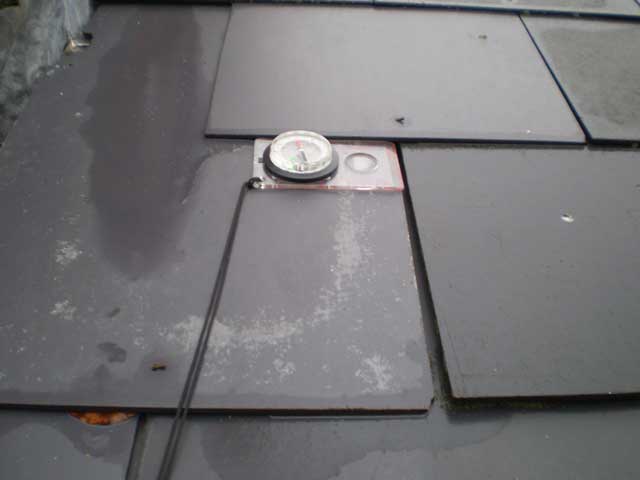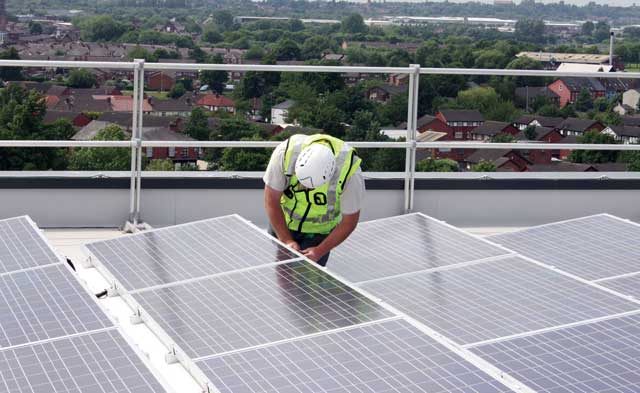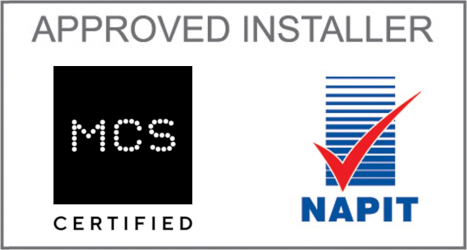The process, simplified.
The Telephone survey (call 01386 871490) / E-mail.

We know it can be a daunting process trying to understand the best financial solution or system. That’s why we start with a very simple telephone survey to understand your ambition and aims, or why you are looking at a system at all. Using our software we can determine how effective a system is likely to be, approximately how much it might cost, and the benefits it will deliver. If you feel it is worth pursuing then we move to the on site survey.
The On Site Survey.

This confirms or amends our findings from the telephone survey. But we double check every element of the system and implementation and any special resources’ we may require such as scaffolding. Roof condition, cable runs, sun irradiation reports and any questions you have are answered here.Your complete satisfaction is essential to us
Planning & Installation
 Worcester Renewables use state of the art tooled vehicles for efficient and effective installation.
Worcester Renewables use state of the art tooled vehicles for efficient and effective installation.
Your system is picked and diarised for installation at a time convenient for yourself. Each installation is project managed so you know exactly how long we will be on site and when you will be generating your own electricity.
Our Installation teams are qualified to industry standards and quality assured through continual training in our in house academy.
Courtesy and cleanliness are our watchwords and we will leave your home as soon as possible with virtually no disruption
Guarantees & Advice
 Most components of the system are guaranteed for 25 years giving you peace of mind. We continue to support you with advice on how to claim your Feed In Tariff and completion certificated ensuring that all paperwork if filed with you should you need it in the future.
Most components of the system are guaranteed for 25 years giving you peace of mind. We continue to support you with advice on how to claim your Feed In Tariff and completion certificated ensuring that all paperwork if filed with you should you need it in the future.
How it works
Photovoltaic systems use cells to convert solar radiation into electricity. The PV cell consists of one or two layers of a semi conducting material, usually silicon. When light shines on the cell it creates an electric field across the layers, causing electricity to flow.
The greater the intensity of the light, the greater the flow of electricity…
PV systems generate no greenhouse gases, a typical domestic system can save almost 1tonne of carbon dioxide emissions per year – adding up to almost 23 tonnes over a system’s lifetime.
PV arrays now come in a variety of shapes and colours, ranging from grey ‘solar tiles’ that look like roof tiles, to panels and transparent cells that you can use on conservatories and glass to provide shading as well as generating electricity. As well as enabling you to generate free electricity they can provide an interesting alternative to conventional roof tiles!
Solar PV and your home
You can use PV systems for a building with a roof or wall that faces within 90 degrees of south, as long as no other buildings or large trees overshadow it. If the roof surface is in shadow for parts of the day, the output of the system decreases.
Solar panels are not light and the roof must be strong enough to take their weight, especially if the panel is placed on top of existing tiles.
Solar PV installations should always be carried out by a trained and experienced installer.
Cost and maintenance
Prices for PV systems vary, depending on the size of the system to be installed, type of PV cell used and the nature of the actual building on which the PV is mounted. The size of the system is dictated by the amount of electricity required.
For the average domestic system, costs can be around £4,000- £6,000 per kWh installed, with most domestic systems usually between 1.4 and 4 kWh. Solar tiles cost more than conventional panels, and panels that are integrated into a roof are more expensive than those that sit on top.
A 2kWh array can provide enough electricity to meet around 40% of a households electricity needs over a year.
If you intend to have major roof repairs carried out it may be worth exploring PV tiles as they can offset the cost of roof tiles.
Grid connected systems require very little maintenance, generally limited to ensuring that the panels are kept relatively clean and that shade from trees has not become a problem. The wiring and components of the system should however be checked regularly by a qualified technician.
Stand-alone systems, i.e. those not connected to the grid, need maintenance on other system components, such as batteries.
Planning considerations
In England and Scotland, changes to permitted development rights for domestic micro-generation technologies introduced in April 2008 and March 2009 respectively have lifted the requirements for planning permission for most solar PV installations. Roof mounted and stand-alone systems can now be installed in most dwellings, as long as they respect certain size criteria. Exceptions apply for Listed Buildings, and buildings in Conservation Areas and World Heritage Sites.
In Wales and Northern Ireland, the devolved governments are currently all considering changes to their legislation on permitted developments, to facilitate installations of micro-generation technologies, including solar PV. Legislation is expected in these countries later this year.
Always check with your local authority to find out if you require planning permission or not, the information on this page is for guidance only.







Leave a Reply
You must be logged in to post a comment.